Matador Network's Blog, page 1244
October 10, 2018
Japan is beautiful in the fall
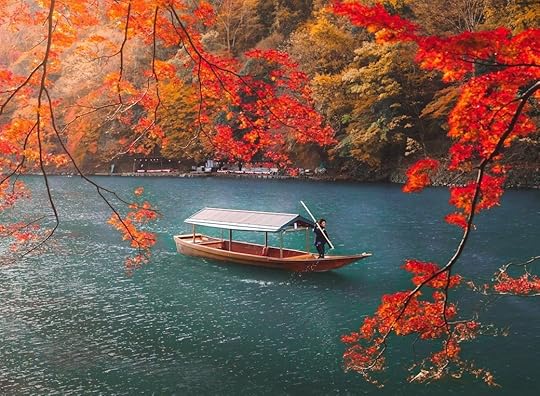
There’s no bad time of the year to visit Japan, but after making the trip this fall, I was reminded just how magical the season really is. Known worldwide for the koyo, autumn-colored foliage, the country is a palette of yellow, orange, and red from September through November. Unlike the spring cherry blossoms, which can sometimes bloom only for a week, the koyo can be viewed for several months. To do fall in Japan right, here are 10 spots you need to check out.
1. Mount Fuji

Experience the natural beauty of Mt. Fuji by hiking around the Fuji Five Lakes. These five lakes are Kawaguchiko, Saiko, Yamanakako, Shojiko, and Motosuko, and they’re some of the best vantage points from which to view Mt. Fuji up close. When you’ve finished your hike, you can go camping, fishing, or enjoy one of the area’s hot springs. Just two hours away from Tokyo, the Fuji Five Lakes make for a perfect weekend excursion.
2. Hiroshima Castle

There’s more to Hiroshima than tragic history, as you’ll quickly find when you explore Hiroshima Castle. While the original castle was built in 1589, as the centerpiece of feudal Hiroshima, it was destroyed by the atomic bomb and rebuilt in 1958 as a museum of pre-WWII Japanese history. From the castle’s top floor, you’ll enjoy panoramic views of Hiroshima and the surrounding countryside.
3. Arashiyama, Kyoto
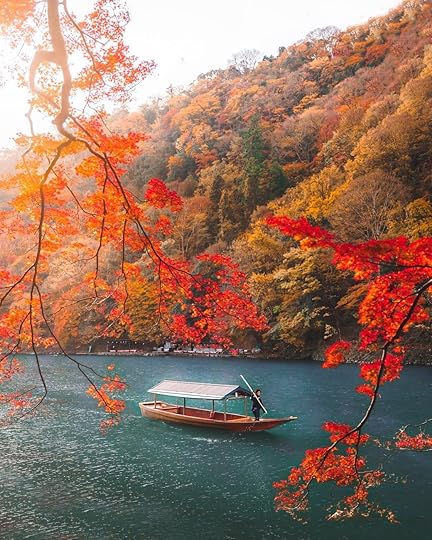
Just outside the bright lights and busy streets of Kyoto, Arashiyama is a small village where fall shines bright. As the home of the famous Togetsukyo Bridge, Arashiyama’s downtown is bustling with tourists, but if you venture upriver to Kameyama-koen Park, or into Tenryu-ji Temple and the Bamboo Grove, you’ll find both solitude and natural beauty. The Bamboo Grove is especially memorable, with stalks of bamboo as tall as trees, and a colorful fall canopy overhead. Arashiyama is just 30 minutes from the center of Kyoto, and easily accessible via train, bus, bicycle, or taxi.
4. Nara
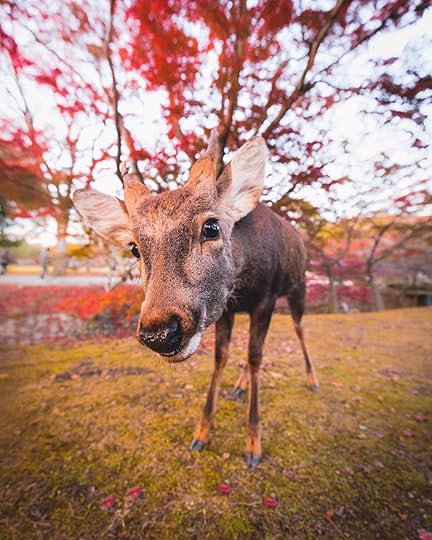
One of the best ways to immerse yourself in koyo is spending a day in Nara Park, at the foot of Mt. Wakakusa. The park is filled with over 1,200 wild sika deer, who roam freely around the 1,240-acre park. There are also private gardens and the nearby Nara National Museum. Walking around the park, you’ll quickly realize why fall in Japan just isn’t complete without Nara’s colorful forests. When you’re finished, take a quick rickshaw ride to Tōdai-ji or Kōfuku-ji, two Buddhist temples.
5. Chureito Pagoda, Yamanashi

One of the best (and lesser-known) spots from which to view Mt. Fuji is the Chureito Pagoda, 400 steps up a mountainside overlooking Fujiyoshida City. It was built as a peace memorial in 1963, as part of the Arakura Sengen Shrine, and it’s particularly striking in the fall, when the mountain’s foliage changes color. Since it’s not quite as heavily-trafficked as the five lakes, you’ll enjoy some peace and quiet here, and an ideal setting to watch the sun set over Mt. Fuji. The pagoda and shrine can be reached by a 10-minute walk from the Shimo-Yoshida train station, along the Fujikyu Railway Line, or by bus along the Mount Fuji World Heritage Loop Bus.
6. Ginkgo Avenue, Tokyo

It can be tough to get a solid nature experience in the heart of a city as busy as Tokyo, but Icho Namiki (Ginkgo Avenue) delivers its fair share of greenery. The street is lined with golden gingko trees, and connects the Aoyama business district and Meiji Jingu Gaien Park. Take your time, and stroll at a leisurely pace down this leaf-covered avenue, maybe stopping at a bench or at one of the sidewalk cafes along the way. Getting there is simple, as the street can be easily accessed by public transport.
7. Memory Lane, Tokyo
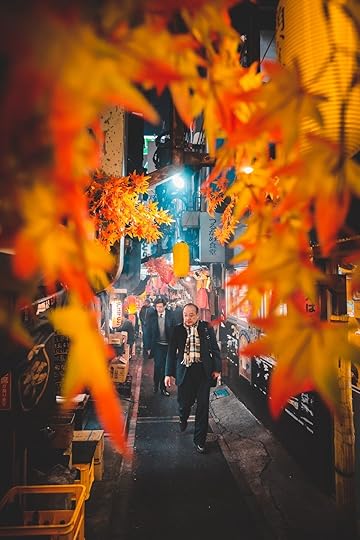
Directly outside of Tokyo’s busy Shinjuku Station you can find Memory Lane, a labyrinth of small alleys filled with authentic Japanese eateries, bars, and lanterns. What started out as an illegal drinking quarter in the 1940s, and then destroyed by a fire in 1999, has been transformed into a place dedicated to preserving traditional Japanese culture. This is the perfect place to try sake, and buckle in for a memorable night out.
8. Fushimi Inari, Kyoto
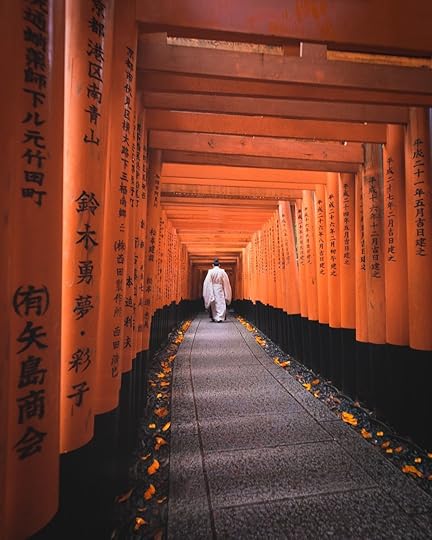
To beat the crowds, it’s best to head to the Fushimi Inari Taisha as early as possible. The shrine in southern Kyoto is famous for its thousands of vermilion torii gates, which lead into the forest of the sacred Mount Inari. Once you’ve thoroughly explored the shrine itself, check out the mountain trails, which are great for hiking. Trekking to the summit of the mountain takes two to three hours, and there are several smaller shrines along the way. On the way up, and especially at the top, you’ll enjoy some pretty spectacular views over Kyoto. I arrived at the shrine very early, at 7:00 AM, just in time to capture this picture of a priest rushing through the maze of torii gates.
9. Kinkakuji, Kyoto
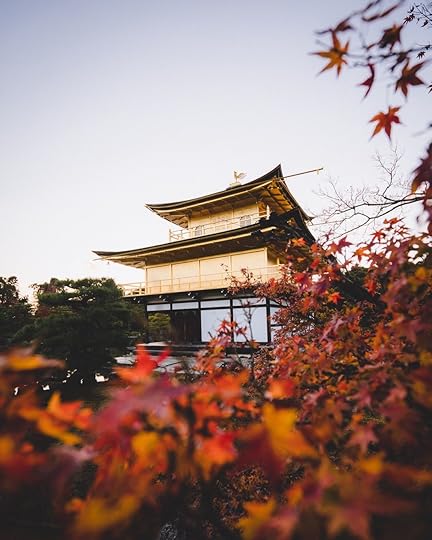
While there are hundreds of temples throughout Japan, Kinkakuji might be the most autumn-esque, as its top two floors are completely covered in gold. Formerly the retirement villa of shogun Ashikaga Yoshimitsu in the late 14th century, and afterward converted to a Zen temple, Kinkakuji overlooks a large pond. Each floor is built in a different Japanese architectural style and the temple gardens have been preserved from the days of Yoshimitsu. Beyond the garden is the Sekkatei Teahouse and a small tea garden, where you can end your visit with matcha tea and other treats.
10. Shinjuku Gyoen, Tokyo
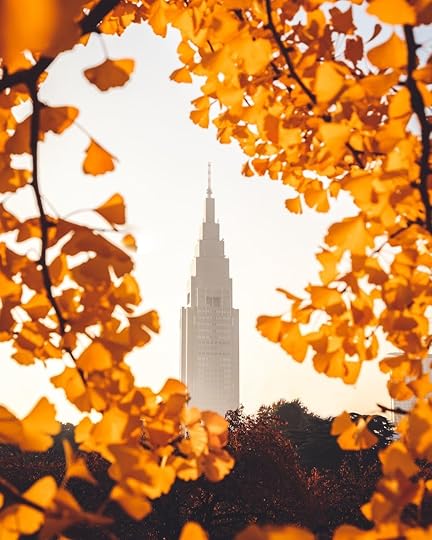
Shinjuku Gyoen gives you a welcome respite from the bustle of downtown Tokyo. It’s the city’s largest park, just a short walk from Shinjuku Station, and its many sprawling lawns are the perfect place to picnic. The park is composed of three different gardens: the Japanese landscape garden, with large ponds, little islands, and bridges; and the French and English gardens, both of which have wide lawns surrounded by trees. Shinjuku Gyoen is also home to several types of trees that change color in the fall, especially the maple trees, which can be found around the Momijiyama (maple mountain) on the park’s eastern side. 

More like this: Fall in love with Japan one color at a time
The post 10 images that prove Japan is even more magical during fall appeared first on Matador Network.

Hawaiian and Navajo now on Duolingo
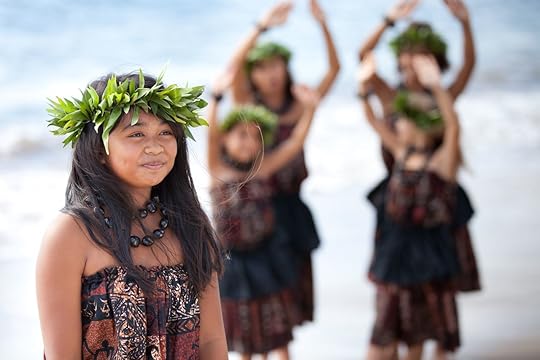
Most people use Duolingo, the popular language learning app, to learn widely-used languages such as French, Spanish, or Chinese, but now you can learn two languages very few others can speak. In an effort to preserve indigenous languages that are nearing extinction by exposing them to a wider audience, Duolingo just added Hawaii’s ʻōlelo Hawaiʻi language, and Diné, the Navajo language, to its list of learnable languages.
While Hawaiian is an official language of Hawaii, only two percent of the population can actually speak it (it was once banned). Duolingo partnered with Hawaiian culture-based schools to build the Hawaiian lessons. Keiki Kawai‘ae‘a, Hawaiian language expert, said in a statement, “Our language is our foundation, but it is also the language of this land, and everyone, Hawaiian or not, can connect to the ʻāina more deeply through it.”
Due to colonial policies instituted by the US government, the Diné language of the Navajo has suffered a similar decline. Diné speakers were forced to use English, until their native language slowly fell out of use. Now, the remaining speakers are trying to revive it. Utah’s San Juan School District, in particular, has partnered with Duolingo to help develop Diné lessons for the app. Although endangered, Diné is still the most widely spoken indigenous language in the US, and learning to speak it could put an interesting twist on your next visit to the Southwest.
Some of the world’s other most endangered languages include Resígaro, an old Peruvian language; Ainu, a near-extinct Japanese tongue; and Patwin, a Native American language from California. Many of these have fewer than 10 speakers worldwide. 
H/T: Lonely Planet

More like this: 25 endangered languages you need to listen to before they disappear
The post Learn the endangered Hawaiian and Navajo languages on Duolingo appeared first on Matador Network.

The reality of being a bartender

Every job has a learning curve and bartending is no exception. There’s a multitude of tips and knowledge about the industry that, if written down, would make one hell of a dummies guide — and a serious deterrent to many aspiring bartenders. If you’ve been working as a bartender for some time and are nostalgic about your humble beginnings, or if you’re new to the industry and need to know what you’re in for, here are our top nine things that every one of us wishes we had known before becoming bartenders.
1. Every shift is an eight-hour arm workout.
Of course, bartending is a physical job, but you don’t realize just how tiresome it is until you’ve had your first proper week behind the bar. Between hauling kegs, restocking booze, and shaking cocktails, your body will be sore. If you work several shifts in a row, you may need to spend a day in bed to physically recover — but your biceps will thank you.
2. It’s all about multitasking.
When I first started bartending, my greatest concern was remembering all the cocktail recipes — and that turned out to actually be the easy part. The hard part of bartending is the multitasking. You must make drinks, take orders, settle tabs, and engage patrons, all at the same time. Learning how to handle the rush while remaining calm is what makes a great bartender.
3. There’s a difference between a bar friend and real friend.
As a barkeep, you tend to spend more time with your regulars than your real friends. While you do develop close bonds with your bar friends, some element of your relationship is still transactional. I’ve often heard the sentiment, “I’m not his friend, I’m his bartender.” While some bar friends do become real friends, it’s usually more like a barbershop-style friendship with most regulars.
4. Your hands will be destroyed.
All aspiring hand models — bartending is not the career for you. With building cocktails, hand-washing glassware, and dealing with lots of liquids, your hands go through the ringer every shift. Manicures don’t last, and some bartenders even develop fungal infections like bar rot on their hands. At the very least, you have to invest in some quality hand moisturizer to counteract your work environment.
5. You will have awkward run-ins with acquaintances and exes.
Bars are public places and, eventually, someone you don’t want to see will walk through the door. The fact that it’s your job to serve them compounds the awkwardness. When that guy who ghosted you brings his Tinder date in or that frenemy from college stops by to celebrate her engagement, the best strategy is usually to kill them with kindness. A round of shots and a quick hello should be enough to prove you’re the bigger person.
6. You will begin to resent free booze.
At the start of your career, one of the perks of bartending is the access to free alcohol. But as time goes by, you’ll start to feel like you have to drink at work, more than you want to drink at work.
7. Bartending comes with responsibility.
Being a bartender means that you’re responsible for “your bar.” That often means inventory, cleaning, maintenance, and making sure all of the necessary prep work is completed each night. Depending on the bar, it can be quite a list of responsibilities. It gives you a sense of ownership over your space, which is fulfilling, but it means you can’t really phone it in.
8. There’s always something to do.
Contrary to popular opinion, bartending is not a job for slackers. Because there are so many elements to maintaining a bar, there are always tasks to be done, even if the bar is empty. It can be thankless work, but someone’s gotta do it.
9. You’re the janitor.
As much as we get to be the life of the party, at the end of the day, bartending is not a glamorous job. You’re also the one taking out the trash, sweeping up broken glass, and mopping up vomit at the end of the night. Every shift ends with a humbling experience. 

More like this: 7 signs you are a rookie bartender
The post 9 things you wish you knew before becoming a bartender appeared first on Matador Network.

Whistler's mountain culture is epic.
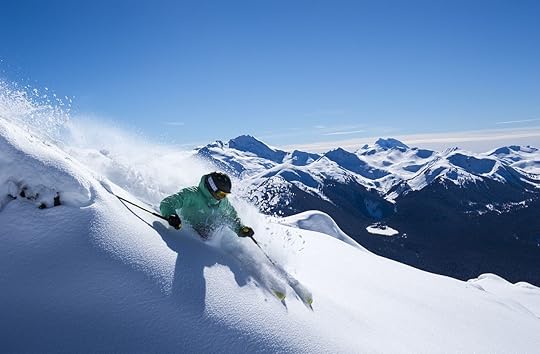
Some of the best things about Whistler are obvious and well-touted: It has more skiing than anywhere else on the continent, the lifts are fast (and there are lots of them), and there’s basically never a shortage of snow — or things to do in the powder.
But the most endearing — and enduring — aspects of this ski town and its twin mountains are less advertised. For example, the stories told over beers at Merlin’s to the sound of Guitar Doug and the Hair Farmers are as much of a draw as the runs themselves. Yes, the skiing makes you book your first trip, but the infectious culture makes you book your second. And third…
Everyone who comes here comes for a reason. Maybe they want to hit the deep powder in Harmony Bowl, or they’re a downhill mountain biker with their sights set on A-line’s jumps, or they’ve heard Whistler has some of the best sushi around (true). And once you’re in town and that mountain air enters your lungs, you’re all in. Everybody here buys into the attitude, which means that, yes, there’s the best skiing, mountain biking, and hiking — but also the food rocks, the bars are great, and the people don’t hold back…on anything.
People like that, the real aficionados — whether of pow, big jumps, or great food — build a pretty sweet town and an equally sweet mountain culture. This is the kind of place where you can catch a lift up with an Olympic athlete and then stop into an art museum après your après ski, where you can ski the Horstman Glacier in the morning, bike Schleyer in the afternoon, stop for a beer at the GLC, and then dig into oyster happy hour at the Bearfoot Bistro by nightfall.
If all that sounds just about right to you, here are a handful of spots where you can get deep into Whistler’s mountain culture.
1. Showcase T-bar and Blackcomb Glacier

Photo: Tourism Whistler / Mike Crane
Nothing beats the feeling of standing at the entrance to Blackcomb Glacier after the 50-foot hike from the top of the Showcase T-bar. You’re basically on top of the world. And getting down? A million options. The hardcore folks slip into Blowhole — a half-pipe-shaped gully to skier’s left — or pop off the cliffs above, but anyone can find their own challenge (and their own nirvana) tackling the whopping 2.24 miles’s worth of sun-softened snow below.
And if instead of feeling sated you’re left craving a higher high, there’s always 7th Heaven. It’s the highest lift-accessed point in the range, and if the views ever get old, you’d be the first to say so.
2. Crystal Hut
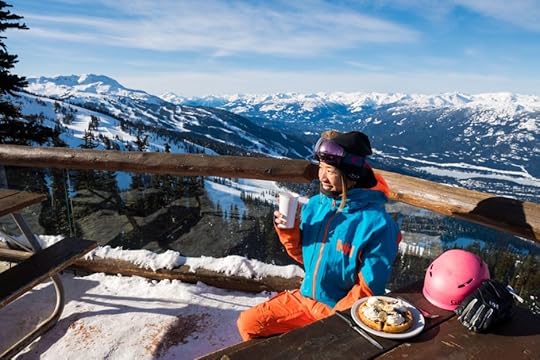
Photo: Tourism Whistler / Mike Crane
Among the dozen or so on-mountain dining options at Blackcomb, Crystal Hut sticks out as the one for serious skiers and boarders — and not just because the freshly made waffles will get you through a day of mind-numbing drops and face shots. The log-cabin design and glass-walled patio make it a charmer, and the small size means it’s a quick stop to get you out on the slopes before the snow even melts off your helmet. That is, it’s quick if you can navigate the throngs of pros (and waffle-lovers) who hang out there.
3. Sushi Village
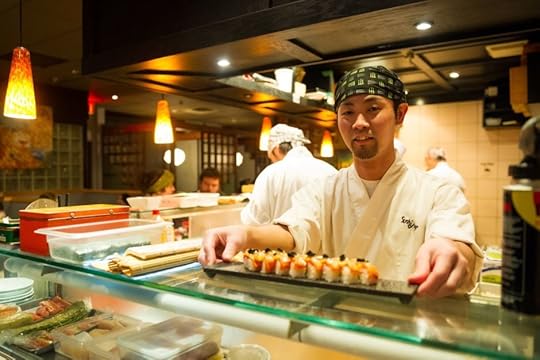
Photo: Tourism Whistler / Mike Crane
The long walk to the bathroom at this restaurant is rated a double-black-diamond (per the sign), and the description seems apt, particularly when you try to find your way after a few of the house strawberry sake margaritas. Like so many places here, Sushi Village was founded by folks who arrived, fell in love with the town, and had to figure out how to make enough money to stick around permanently. It turns out the answer is that people who love superlative skiing love superlative sushi, too. The Beautiful Roll is a fan-favorite, but all the fish is that-day-fresh, straight outta Vancouver.
4. Audain Art Museum
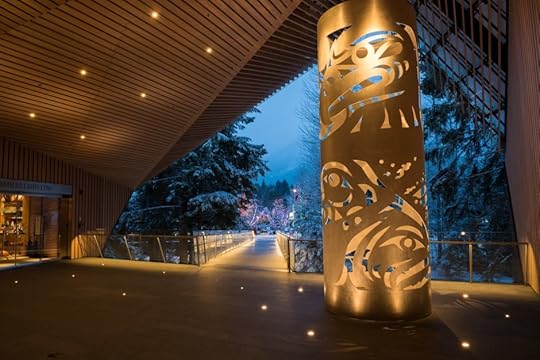
Photo: Tourism Whistler / Mike Crane
Only in Whistler could you literally stumble on a museum holding the largest permanent collection of famed Canadian artist Emily Carr’s work in the world. Owner Michael Audain could have housed his Northwest Coast Masks and $3.3-million-dollar paintings anywhere in the province, but because it’s in Whistler, where the world-class is the everyday, the sleek, modern building camouflages right into a corner of forest in the center of town.
Pro tip: Grab a Cultural Access Pass. It gets you 15% off tickets to the museum and to the Squamish Lil’wat Cultural Centre (more on that below).
5. Squamish Lil’wat Cultural Centre

Photo: Destination Canada
The contemporary town of Whistler may have been founded by the same type of snowsport-obsessed, passionate folks you still find here, but they weren’t the first to appreciate the amazing intersection of soaring peaks and lush valleys. Visit the Centre to learn about the lifestyle of the people who lived here before the mountaintops were just two chair rides from the village.
Tours (every hour, on the hour) show off the legends, canoes, and art of First Nations peoples of the area — the tribes who invented the original mountain culture. There are some pretty sweet events and workshops, too, including tea offerings, weaving, and drum-making sessions.
6. The après scene
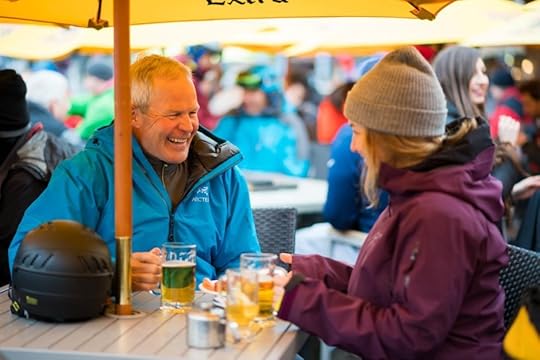
Photo: Tourism Whistler / Mike Crane
The best drink in town is always the first one after you get to the bottom of the mountain. Whistler has slopeside bars and restaurants, of course, but the plethora that await on lower ground seal in the “mountain culture” vibe. Try Dusty’s, which dates way back to 1965, though the scene has evolved a little since then (the views haven’t changed much).
And when après ski is over and you’ve switched ski boots for dancing shoes, Longhorn is the place to stretch your legs. The music and the bumpin’ crowds will make you forget the endless vertical you clocked earlier (well, almost), and the patio is always surprisingly warm for that well-deserved break.
7. The Peak Express
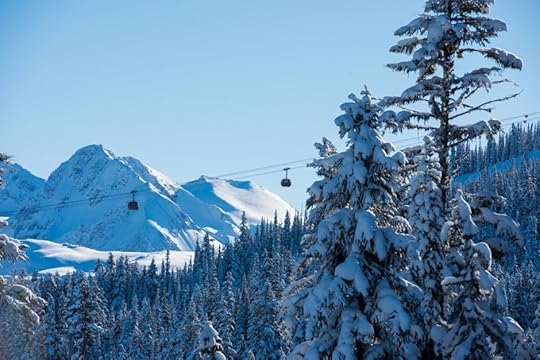
Photo: Tourism Whistler / Mike Crane
Look to your right as you wait to board this iconic lift and check out the kind of cliff drops and big-mountain skiing people pay money to see onscreen. Most of the ride up is over pure gnar — when the lift was first built, it was going to end at half its current height. No one thought taking it all the way to the top was possible, but in the end they went for it. That’s the level we’re talking. The Waterfall, the Air Jordan…this quad chair is for skiers with a solid Evel Knievel streak.
If you fall into this category, the lift’s steep chutes and challenging terrain will just be inspiring scenery as you board. At the top, you can choose your own adventure. Follow in former footsteps or explore your own lines. As is true everywhere in Whistler, any way down is an adventure.
8. Whistler Village

Photo: Tourism Whistler / Brad Kasselman
Located at the base of Whistler and Blackcomb Mountains, Whistler Village is a chalet-style pedestrian hub with twinkle lights everywhere. If there’s anywhere that feels more like walking inside a snow-globe, we haven’t seen it. Go for a “village stroll,” wander the stone walkways and bridges, and take that family photo for the Christmas card while you’re at it.
And then hit up all the Village’s spots. Some we’ve mentioned — like the above — and others you’ll have to uncover for yourself. The list is long, so it’s best to get started. 
The post Whistler has a mountain culture like nowhere else. Here’s proof. appeared first on Matador Network.

October 9, 2018
11 pumpkin recipes around the world
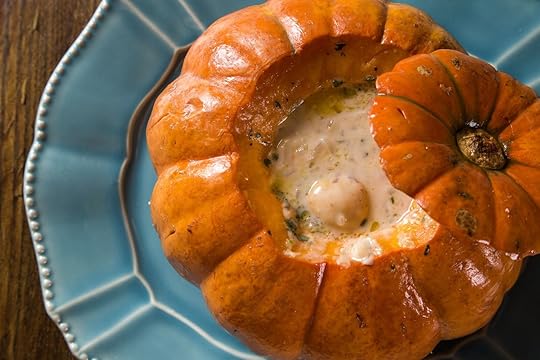
It’s that time of year again. Pumpkin is back in season and dominating menus across the US, inspiring everything from our beers to our favorite holiday treats. But the quintessential winter squash is good for way more than just Thanksgiving pies and jack-o-lanterns. It’s a staple ingredient all over the world, celebrated in traditional recipes that are equal parts sweet and savory, hearty and delicious. When you make your trip to the pumpkin patch this year, don’t carve into your harvest too quickly; instead, keep these game-changing global dishes in mind to make the most of everyone’s favorite cold-weather gourd.
1. Pampoenkoekies — South Africa

Photo: Nolte Lourens/Shutterstock
America might seem to have the monopoly on deep-fried everything — we’re looking at you fried butter — but these pumpkin fritters from South Africa are some of the tastiest treats you’ll ever eat. Light as a cloud, the traditional dessert melts in your mouth and is often enjoyed drenched in caramel sauce, which brings out the sweetness of the main ingredient. And the best part is that they’re incredibly easy to make. Combine pumpkin purée, flour, baking powder, sugar, milk, egg, and spices — cinnamon, nutmeg, and allspice — then mix until well combined. Divide the batter into bite-sized balls and fry them up in oil with a high smoke point like canola or vegetable oil. Take our word for it and try these at home — your sweet tooth will thank us.
2. Challaw kadu — Afghanistan
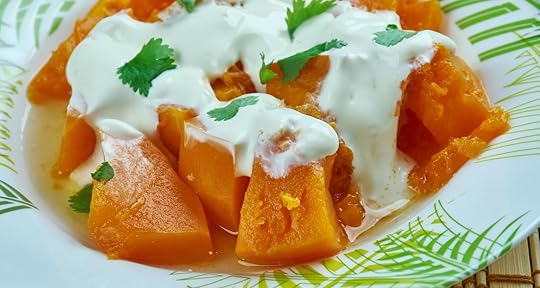
Photo: Fanfo/Shutterstock
Roasted, broiled, stewed, pureed — there are countless ways to prepare pumpkin. This particular recipe calls for pumpkin to be lightly fried then simmered in a liquid mixture made with onion, garlic, ginger, turmeric, coriander, chilli powder, tomato paste or sauce, and water. Lamb or beef are popular additions, which can be ground and heated with spices and aromatics before combined with the pumpkin and simmering liquid. Serve challaw kadu with rice and top with yogurt sauce for a bit of freshness and tang. Garnish with fresh mint, and you’ll have a dish that will leave you wanting seconds.
3. Kar’ Assaly — Egypt
View this post on InstagramA post shared by @ahava_x on Oct 17, 2015 at 7:08am PDT
Forget everything you thought you know about pumpkin pie. This mouthwatering Egyptian rendition ditches a flaky crust in favor of spreading pumpkin filling — flavored with cardamom, cinnamon, orange blossom water, and honey — to the very edges of a greased baking dish. Raisins, nuts, and grated coconut are layered in for texture and extra sweetness, then the whole thing is topped with a creamy vanilla sauce. If you want to test your fate with cavities, you can also add an extra splash of honey or maple syrup to the finished product, which is best enjoyed fresh out of the oven.
4. Canh bi do thit — Vietnam
View this post on InstagramA post shared by Phibo.babies (@phibobabies) on Aug 1, 2018 at 7:34pm PDT
What makes this Vietnamese dish so good is the marriage between hearty chunks of pumpkin, a protein such minced pork belly, and a delicate, savory broth. Pork stock is preferred for the broth base, which gets its depth from any number of add-ins, ranging from mushrooms and fish sauce to green onions and cloves. Salt, pepper, and sugar are also crucial as the base seasonings. Perfect for cold weather, canh bi do thit is as effortless to prepare as it is enjoyable to slurp down, assuming you’re not making your stock from scratch.
5. Camarão na moranga — Brazil

Photo: Paulo Vilela/Shutterstock
There are two stars of this classic Brazilian dish, which is so popular back home there’s a festival dedicated to it in São Paulo every year. Pumpkin (moranga) and shrimp (camarão) come together to make a meal that is as pleasing to the eye as it is the palate. First, an opening is cut into the top of a pumpkin, which is then deseeded, wrapped in tinfoil, and baked on medium-high heat for 45 minutes to an hour. Shrimp is then sauteed with garlic and onion, followed by seedless tomatoes and spices like black and red pepper. Once fragrant, the mixture is removed from the heat and combined with cream and cream curd (cream cheese or cottage cheese can be used as a substitute). The filling is then scooped directly into the tender pumpkin and filled to the brim. Garnish with cilantro, pair with white rice, and dig in.
6. Olad’i iz tykvy — Russia
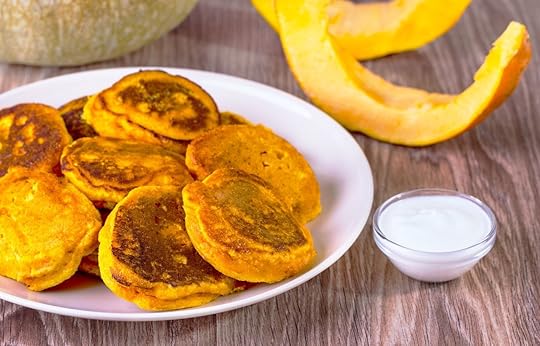
Photo: Chantal2821/Shutterstock
If you’re craving pancakes this fall, we suggest that you back away from those blueberries and ditch those chocolate chips. Instead, take a page out of a Russian cookbook and let pumpkin bring the sweetness. Olad’i iz tykvy uses all the ingredients you’d expect of a batch of buttermilk pancakes plus pumpkin purée, which not only adds flavor but also a silky texture. The end result will be moist and fluffy but still thin — perfect to be enjoyed in a tall stack drizzled with honey, a dollop of jam, or sour cream. Pancakes are a traditional breakfast in Russia, and with recipes like this one, we can understand why.
7. Pumpkin curry — Myanmar

Photo: travellight/Shutterstock
Pumpkin curry is one of Myanmar’s defining dishes. Popular recipes typically pair pumpkin with tamarind and sometimes peanuts or proteins like chicken to create a rich curry that hits all five basic tastes: sweet, sour, salty, bitter, and savory. To make it yourself, steep tamarind in boiling water, pass it through a sieve, and reserve the resulting liquid. After, fry up onion, garlic, turmeric, ginger, chilis, and dried shrimp powder, then add your peeled and chopped pumpkin cubes. Pour the reserved tamarind juice over the pumpkin once it’s lightly browned, using extra water if necessary to ensure that the cubes are just covered. Simmer until tender but not mushy. If you opt to add peanuts, toast them for a few minutes and sprinkle on top. Serve with rice.
8.Nhopi — Zimbabwe

Photo: StockphotoVideo/Shutterstock
Nhopi is a type of porridge made with a simple list of ingredients that strikes the perfect balance between sweet and savory, including pumpkin, peanut butter, and cornmeal. Once the pumpkin has been cleaned, diced, and left to simmer in water until tender, it’s removed and mashed. Cornmeal is then added to the water until it forms a paste. After, the two ingredients are combined, and peanut butter is melted in. Whatever spices are incorporated next is up to the individual chef. The most popular additions are cinnamon and ginger — as well as salt, sugar, or both, depending on your preference — but add-ins like nutmeg or allspice also go quite well. This traditional, filling dish makes a nice alternative to oatmeal for a morning meal and can also be eaten as a dessert if you play up the sweet notes.
9. Kaddu ka halwa — India
View this post on InstagramA post shared by Style and Geek (@stylengeek) on Feb 28, 2014 at 6:33am PST
Kaddu ka halwa is to Indian kids what apple pie is to American kids: a sweet treat best prepared by grandma, or naniji in Hindi. It’s commonly sold during street festivals and at market stalls during the rainy season in India, when pumpkins are ripe for the picking. It’s a simple recipe made from grated pumpkin, which is traditionally cooked in ghee along with nuts like pistachios or cashews, milk, cardamom, and sugar. The resulting mixture will be thick like pudding but more fibrous. For a bit of flair and a nice crunch, garnish with extra nuts before serving.
10. Ghapama — Armenia

Photo: Fanfo/Shutterstock
Christmas, New Years, and other celebratory occasions in Armenia are all about this stuffed pumpkin dish, which combines rice with dried fruit like raisins, apricots, dates, and prunes, as well as nuts like walnuts or almonds for the filling. A generous spoonful of honey is also customary. The word ghapama refers to food cooked in a covered pot in Armenia; in this case, the vessel is a pumpkin that has had the top removed, been cleaned out, and baked until soft. Be careful not to overcook the rice initially as it’ll go back in the oven at 350 degrees Fahrenheit for about an hour once stuffed inside the pumpkin. Ghapama is a big deal in Armenia, so much so that there’s a song about it. For a double dose of culture when preparing this festive dish, blast this while you toil away in the kitchen.
11. Calabaza en tacha — Mexico
View this post on InstagramA post shared by Una Mexicana en USA (@unamexicanaenusa) on Sep 17, 2018 at 10:25am PDT
Sweet, syrupy calabaza en tacha is a candied pumpkin dessert that features heavily in Mexico’s Día de Muertos, or Day of the Dead, celebrations. It’s traditionally made with pumpkins that have a tougher skin as three-inch sections are left to simmer in boiling water flavored with cinnamon, orange juice and zest, and brown sugar cane until the rind is fork tender. For the most authentic preparation, use piloncillo, a minimally processed sugar common in Latin American countries. After the pumpkin pieces are tender, remove them and reduce the remaining liquid down into a thick syrup. Drizzle the sugary sauce on top and serve with a scoop of vanilla ice cream to complete the dish. 

More like this: 8 pumpkin beers made with real pumpkin
The post 11 classic pumpkin recipes from around the world appeared first on Matador Network.

The best haunted hayrides in the US
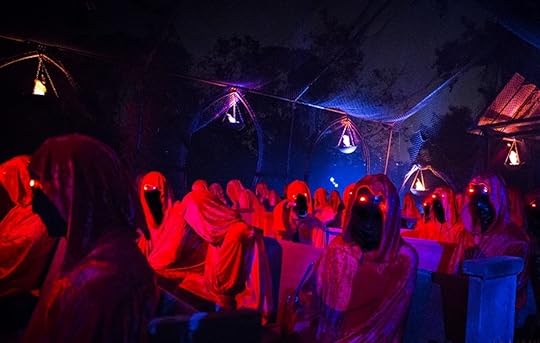
After carving pumpkins and stuffing your face with candy corn, haunted hayrides are one of the best ways to celebrate Halloween. Piled into a wagon with your friends and family, you get to scream your lungs out into the October night — and these haunted hayrides are so much more than a quaint trip through the pumpkin patch. Killer clowns, chainsaw-wielding madmen, and the Headless Horseman himself come complete with special effects, dedicated performers, and frightening storylines. These haunted hayrides will be worth every nightmare they’re sure to give you.
1. Dark Terror-tory Haunted Hayride in Niles, Michigan

Photo: Niles Scream Park/Facebook
Niles Scream Park lets you know that it’s not responsible for dry-cleaning bills when visitors wet their pants. If that level of scared sounds like your kind of good time, then you’ll want to climb aboard the park’s Dark Terror-tory Haunted Hayride. Once safely seated in the wagon, guests are pulled past more than 30 sets on a mile-long trail. Part horror and part humor, the scenes work together to tell a story. The narrative, which changes every year, draws guests in and makes them part of the show. Tickets for the hayride cost $8 per person. For the hayride as well as access to the entire park, combination tickets cost $30 ($35 on Saturdays in October). Other attractions include a haunted house, haunted corn maze, and an experience called “Hooded,” during which thrill-seekers are alone and blindfolded.
2. Dead End Hayride in Wyoming, Minnesota
View this post on InstagramA post shared by The Dead End Hayride (@thedeadendhayride) on Sep 21, 2018 at 10:40am PDT
For most of the year, the woods around Pinehaven Farm are peaceful and void of evil. But every fall, brave souls gather to test their courage at the Dead End Hayride, the self-billed “ultimate horror experience.” The journey’s hair-raising scenes are made even more so by cryogenic blasts, explosions, and pyrotechnic displays. If you manage to make it past the horrifying creatures prowling among the trees, you’re welcome to rest at either the Pinehaven Motor Inn or Sunnyvale Asylum. Don’t let your guard down, though. Creepy clowns have been known to follow visitors out of the woods. The Friday and Saturday before Halloween, general admission tickets cost $30 at the door.
3. Haunted Hayride in Los Angeles, California
View this post on InstagramA post shared by Los Angeles Haunted Hayride (@lahauntedhayride) on Oct 24, 2017 at 1:24pm PDT
Before you can experience the Los Angeles Haunted Hayride for yourself, you have to walk through the gates of Purgatory. Set in the abandoned Griffith Park Zoo, the haunted village features a variety of Halloween experiences, such as rides on the Scary-Go-Round and mind-readings by a psychic. But the real scares are waiting for you in the haunted woods. Stay on the lookout for killer clowns lying in wait for an unsuspecting passerby. Tickets, which include admission to Purgatory and the haunted hayride, cost $36 per person.
4. Ride of Terror in Mullica Hill, New Jersey
View this post on InstagramA post shared by nightofterrornj (@nightofterrornj) on Aug 3, 2018 at 6:45am PDT
Creamy Acres Night of Terror Farm knows how to make visitors scream. If you dare, climb aboard the Ride of Terror haunted hayride for 25 acres of terrifying zombies, psychotic clowns, and chainsaw-wielding madmen. You never know what’s waiting for you around the next turn or lurking among the cemetery headstones. General admission tickets cost $35 per person and include access to the other park attractions. If you survive the Ride of Terror, check out the Haunted Paintball hayride, where you have to fight to protect yourself from the oncoming zombie hoard. The Haunted Paintball hayride is separate from the other attractions and costs $25 per person. Combination passes are available for $75 each.
5. Legends of the Fog in Aberdeen, Maryland
View this post on InstagramA post shared by Legends of the Fog (@legendsofthefog) on Oct 13, 2017 at 5:19pm PDT
The undead are coming, and for any hope of survival, you must stick together with your hayride companions. The Legends of the Fog haunted hayride takes visitors on a long and spooky journey through a zombie-infested junkyard, haunted forest, and creepy cornfield. Are you sure you should trust the friendly local who offered you a ride? Keep a close eye on the rest of the group — and your limbs. Whatever happens, don’t stop moving. You don’t want to get caught by the fog. Hayride tickets cost $20 while a $30 combination ticket allows you to experience all the attractions.
6. Witch’s Wood Haunted Hayride in Westford, Massachusetts
View this post on InstagramA post shared by Ines Costa (@inesssssssssss) on Oct 1, 2018 at 12:54pm PDT
Did you hear that sound? It’s werewolves howling at the moon, and they’re emerging from the darkness of Witch’s Wood to encircle your wagon. The werewolves aren’t the only ones attracted to the scent of human flesh. While the good witches do their best to keep guests safe, zombies and other unknown creatures inhabit the forest. Try your hardest to get away, but the spirits of dead lumberjacks want to hack your wagon in two to ensure you never leave. If you haven’t screamed enough after the haunted hayride, check out the park’s other attractions, such as the Keeper’s Crypt. The three-dimensional land of the living dead promises a whole new level of terror. General admission tickets cost $38 per person.
7. Headless Horseman Hayrides in Ulster Park, New York
View this post on InstagramA post shared by Headless Horseman Hayrides (@h5hayride) on Oct 5, 2018 at 5:35pm PDT
This 250-year-old farm in the historically haunted Hudson Valley sets the perfect spooky scene for Headless Horseman Hayrides. On the mile-long hayride, you’ll tour the abandoned town of Old Crow Hollow and come face to face with evil creatures — made up in incredibly terrifying costumes — that want to drag you into the darkness. Ichabod Crane didn’t get past the infamous Headless Horseman. Will you? General admission tickets cost $50 plus tax. In addition to the hayride, the price of admission includes access to a haunted corn maze, six haunted houses, and a dark circus sideshow. 

More like this: The spookiest small towns in the US to visit this Halloween
The post The 7 scariest haunted hayrides in the United States appeared first on Matador Network.

The 5 best beer hiking trails
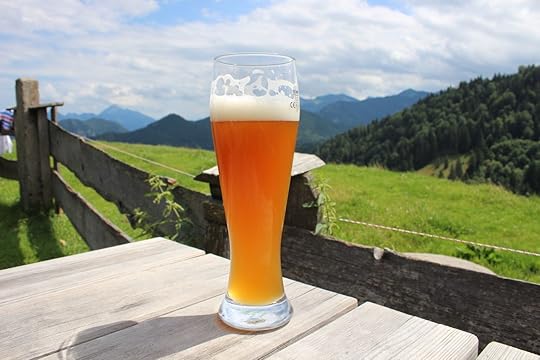
Few things are as satisfying after a long day on the trail than relaxing over an ice-cold beer. In the United States and beyond, avid hikers have mapped out the best routes for imbibing during and after some of the world’s most renowned hikes, making it possible to both have your hike and drink beer too. These breweries and pubs — some trailside and others within a short distance of your route — will send you down the line to the next stop feeling satiated or provide a cozy, overnight respite from your journey. Here are the five coolest beer hiking trails to set out on.
1. Five-Seidla-Trail, Germany

Photo: manfredxy/Shutterstock
Found in Franconian Switzerland, one of the oldest and most visited holiday areas of Germany, the Five-Seidla-Trail is a 20-km round-trip trek that will take you to five different Franconian breweries located in four villages along the way. Make sure to pick up a stamp card, “Stempelkarte” in German, at your first stop to have validated at each brewery. Not only will this beer-drinkers diploma prove your bragging rights for completing the trail and drinking all five seidlas (German for half-liters) of beer, but it will also earn you a discount on a souvenir mug once your journey has ended. Give yourself all day for this hike as you’ll want to take your time enjoying both the breweries and the beautiful Bavarian countryside. The breweries on this tour include:
Stop 1: Klosterbrauerei Weißenohe
Stop 2: Friedmanns Bräustüberl
Stop 3: Brauerei Hofmann
Stop 4: Thuisbrunner Elch-Bräu and Gasthof Seitz
Stop 5: Brauerei Lindenbräu
2. Ice Age Trail, Wisconsin
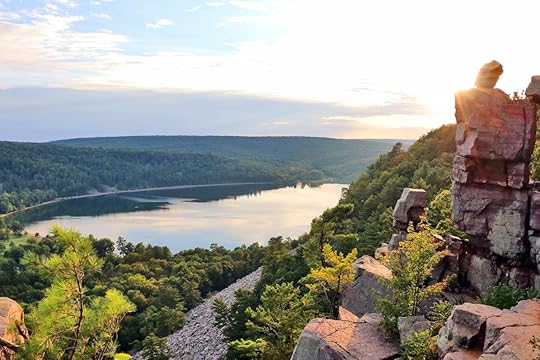
Photo: MarynaG/Shutterstock
The Ice Age Trail meanders across Wisconsin for more than 1,000 miles, hugging the edge of the state’s beautiful landscape, which was shaped by continental glacial ice more than 12,000 years ago. It takes anywhere from seven to 12 weeks to complete this hike from start to finish, but lucky for you, there are some well-known breweries to seek shelter in along the way (or raise a toast at after completing a rigorous day hike). The trail is maintained by the Ice Age Trail Alliance. It’s recommended to check the website for trail conditions and purchase a guidebook with detailed trail maps to help you along your journey. All of these breweries are located along the southern portion of the trail. If you’re not game to spend two to four months hiking the entire trail, you can opt to do a shorter section between the cities of Verona and West Bend in order to hit each of them then call it a trip:
Stop 1: Hop Haus Brewing Co.,Verona
Stop 2: Delafield Brewhaus, Delafield
Stop 3: Gray Brewing Co., Janesville
Stop 4: Riverside Brewery, West Bend
3. The Appalachian Trail Pub Crawl, Eastern US

Photo: Jon Bilous/Shutterstock
The Appalachian Trail is located in the Eastern United States, stretching 2,200 miles between Springer Mountain in Georgia and Mount Katahdin in Maine as it winds through 14 different states. It’s estimated to take between five and seven months to complete the whole trail with a success rate of only about 20 percent. While most of the hike is in wild or forest lands, lucky for you, it also passes through plenty of civilization full of locals who appreciate a nice cold one. The adventurous imbibers at hiking website The Trek routed this epic pub crawl along the way:
Stop 1: The Rock House Lodge at Outdoor 76 in Franklin, NC
Stop 2: Smoky Mountain Brewery, Gatlinburg, TN
Stop 3: The Damascus Brewery, Damascus, VA
Stop 4: Boiling Springs Tavern, Boiling Springs, PA
Stop 5: The Deer Head Inn, Delaware Water Gap, PA
Stop 6: Wits End Tavern, Unionville, NY
Stop 7: Kingsley Tavern, Kent, CT
Stop 8: Purple Pub, Williamstown, MA
Stop 9: Ye Olde Tavern, Manchester Center, VT
Stop 10: Salt Hill Pub, Hanover, NH
Stop 11: Lakeshore House Lodging & Pub, Monson, ME
Stop 12: The Blue Ox Saloon, Millinocket, ME
4. Colorado Trail, Colorado

Photo: Patrick Poendl/Shutterstock
Connecting 500 miles of the Rocky Mountains from Durango heading northeast to Denver, the Colorado Trail passes through six national forests and takes dedicated hikers six weeks to complete. Most of the trek is above 10,000 feet with the highest point being 13,271 feet, so be ready for the added obstacles that come with hiking at higher altitudes. In addition to the elk, moose, mountain lions, and osprey you may stumble upon, you’ll find plenty of opportunities to drink beer. Beer drinkers lounging in their natural habitat may be found at these spots along the way:
Stop 1: Mad Jack’s Mountain Brewery, Bailey
Stop 2: Broken Compass Brewing Company, Breckenridge
Stop 3: Periodic Brewery, Leadville
Stop 4: High Alpine Brewing Co., Gunnison
Stop 5: Ska Brewing Co, Durango
5. Pacific Crest Trail, Western US
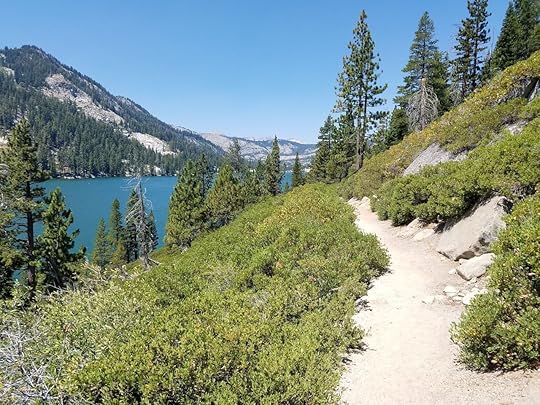
Photo: Ajinkya9/Shutterstock
Running 2,650 miles through California, Oregon, and Washington, the Pacific Crest Trail stretches all the way from Mexico to Canada and passes through forests, mountain ranges, and desert landscapes. The full journey includes 25 national forests and seven national parks. Along with the Appalachian Trail and the Continental Divide Trail, the Pacific Crest Trail helps make up what is considered the “Triple Crown” of hiking and takes about three to five months to complete. Even if you only do a day hike or weekend backpacking trip, you can relax with a brew along the way at these spots:
Stop 1: Dru Bru, Snoqualmie Pass, WA
Stop 2: Walking Man Brewery, Stevenson, WA
Stop 3: Thunder Island Brewing Co., Cascade Locks, OR
Stop 4: Mammoth Brewing Company in Mammoth Lakes, CA
Stop 5: Nickel Beer Company, Julian, CA
If you’re lucky enough, you may come across a “Trail Angel” in one of these watering holes — locals that are known for purchasing food or drinks for hikers and have even offered travelers rides or places to stay. 

More like this: 7 beautiful trekking routes in Japan you should do this year
The post Beer hiking is a thing, and it’s awesome. Here’s where to do it. appeared first on Matador Network.

Beautiful villages in Switzerland
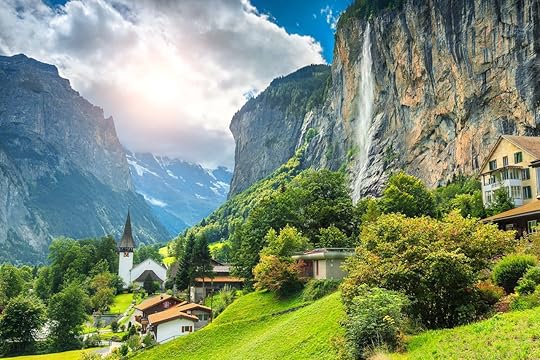
Zurich, Geneva, and Lucerne are easy on the eyes, but Switzerland’s true appeal lies in the more remote reaches of this small, mountainous country. There are dozens of adorable villages throughout Switzerland, many of them set against the towering Alps or alongside tranquil lakes, matching your Heidi fantasies perfectly. To pile on the charm even further, some of the villages are so isolated that the only way to reach them is by mountain train, cable car, or on foot — but the sceneries awaiting you are well worth putting in the effort get there. Experience Switzerland beyond its slick cities and fancy ski resorts by checking out these seven adorable villages.
1. Lauterbrunnen

Photo: Andrew Mayovskyy/Shutterstock
Despite the village’s ease of access (the train from Lucerne takes under three hours), and sheer Instagrammability, Lauterbrunnen still maintains all the charm you’d expect from a Swiss village.
The village is set in the Lauterbrunnen Valley, which is surrounded by steep rocky cliffs, occasionally interrupted by dramatic glacial waterfalls. On a clear day you can see the summit of the famous Jungfrau mountain, and when the conditions are right you’ll hear the terrifying flap of wingsuits above you — it’s one of the world’s most revered BASE jumping destinations.
It may be one of Switzerland’s more touristy villages, but with a single main road, only a few dozen buildings, a single grocery store, and mind-boggling scenery, it’s definitely worth the inclusion on any Swiss itinerary.
2. Gimmelwald

Photo: jaras72/Shutterstock
Gimmelwald is located on a small patch of land high up on a mountain, at the far end of the Lauterbrunnen Valley. The village is so small and isolated that its population of approximately of 130 typically has to take a wander down the mountain to Lauterbrunnen for schooling and groceries.
The tiny village has everything you’d want in a remote Swiss village — clanging cowbells, the odd herd of bleating goats, Alpine views, and a friendly community that’s happy to show off its unspoiled wonderland.
Gimmelwald is car-free by necessity — there are no roads up the steep cliffs to the village. To reach it, you’ll need to walk, or catch a bus to the top of the Lauterbrunnen Valley, and then hop aboard the gondola that makes its way up the mountain.
3. Andermatt

Photo: Peter Wey/Shutterstock
At an altitude of just below 5,000 feet, the village of Andermatt is the ideal destination for skiers in winter, and the perfect hiking base in summer. It’s the largest of three villages in the Ursern Valley, and at the crossroads of Switzerland’s north-south and east-west mountain passes, and yet it’s anything but bustling.
Andermatt’s village center is all about cobbled streets, fluttering flags, and steep-pitched roofs, making it a textbook Swiss village. Because it’s located on the country’s most scenic train line, the Glacier Express, it’s the ideal pitstop as you chug between Zermatt and St. Moritz.
4. Wengen

Photo: Sanga Park/Shutterstock
Wengen is relatively close to the capital city of Bern and yet it feels far away from any kind of urban reality.
The town is somewhat touristy — it’s a popular waypoint on the way to the Jungfrau’s summit. But like so many villages in the region, it has maintained a careful balance between kitsch and authentically Swiss, helped in no small part by its phenomenal mountain views, including of the famous Eiger.
The village is beautiful year-round; in winter the snowfall in Wengen is abundant, but come summer, only the highest peaks retain a dusting of snow, serving as the perfect contrast to deep blue skies and emerald pastures.
5. Mürren

Photo: Boris-B/Shutterstock
Mürren is a tiny mountain village located at the foot of the iconic Schilthorn Peak, famous for its role in 1969’s James Bond movie On Her Majesty’s Secret Service.
From Mürren, there are dozens of hiking trails across a range of difficulties that serve up some of the best views in the Alps. But if you want to stay put, the village also a great place to unplug and chill — smoke billows quietly from nearby chimneys, and clanging cowbells drift over the village and down the steep mountainsides, uninterrupted by the noise of motorized transport.
With no vehicular access to Mürren, the only viable transport option is a cable car, or a grueling hike from the Lauterbrunnen Valley floor, which will leave you feeling blissfully far from any kind of modern civilization.
6. Guarda

Photo: Nella/Shutterstock
The scenery surrounding the village is the stuff of postcards, and is perfect for the outdoorsy types in both winter and summer. But it’s the beautifully maintained traditional Engadine houses, that residents still decorate with pride, that make this one of the most adorable villages in the country.
Once a busy village on the route between Lake Como and Innsbruck, these days it’s the perfect spot for some peace and quiet, with the majority of traffic now using more accessible routes on the valley floor.
7. Grindelwald
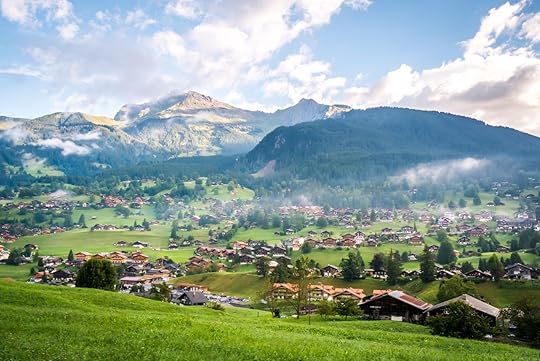
Photo: Byjeng/Shutterstock
Grindelwald is a popular resort village located 3,392 feet above sea level in the Bernese Alps. In the winter, skiers and snowboarders tear it up on the various slopes, and then head to the town’s bars and restaurants for lively après-ski. In the summer, it’s somewhat more relaxed, with hikers using the village as a base from which to explore the nearby mountain peaks.
The scenery surrounding the village is what you’d expect from these parts, and easy accessibility by road and railway makes it a popular inclusion in the itineraries of the world’s wealthier travelers. Although this may have impacted its charm — the village’s population has grown steadily over the years — Grindelwald is still a pretty, if slightly polished, village worthy of your Swiss francs. 

More like this: The 7 most epic Matterhorn experiences
The post The 7 most adorable villages in Switzerland appeared first on Matador Network.

Alaska’s Fat Bear Week contest

In the Alaskan bear community, there’s no such thing as fat shaming. When you’re the fattest bear in town, you not only guarantee a healthy hibernation, but also earn the prestige that comes with winning Fat Bear Week. On October 3rd, Katmai National Park and Preserve in King Salmon, Alaska, kicked off its tribute to its heftiest bears with this annual weeklong celebration of ursine girth. Organized in a bracket system, bears commonly seen on the park’s Bear Cam are pitted against each other for public voting, until one bear is deemed the fattest.
The tradition began back in 2014, when park rangers asked visitors to vote on which bear was the fattest. Now, the park has developed a more sophisticated voting system, presenting two bears each day to the public, who can decide which one moves on to the next round.
One bear to watch is Bear 747. According to the park’s website, his “belly barely makes clearance with the ground,” and he’ll be a lead contender this year to unseat last year’s champion, Bear 480 Otis. Bear 409 Beadnose is also portly enough to win this year’s title.

Photo: Katmai National Park & Preserve/Facebook

Photo: Katmai National Park & Preserve/Facebook
And don’t worry, these bears aren’t weight conscious. Being a hefty brown bear is a sign of good health. To survive the winter they require sufficient stores of fat, which means they need to be eating constantly. If anything, Fat Bear Week is the perfect incentive to motivate bears to prepare for winter.
The contest runs until October 9th (today!) at 7:00 PM Eastern when the winner will be decided. 
H/T: Travel & Leisure

More like this: The 7 best places to see a polar bear in the wild
The post Vote for your favorite fat Alaskan bear appeared first on Matador Network.

Signs your mom is from Wisconsin

Imagine your childhood without the influence of your Wisconsin mom. You’d have eaten far less cheese, and you’d never know the joy of watching your mom dance the polka at your cousin’s wedding. And don’t even get me started on your Midwestern vocabulary. You owe a lot to your Wisco mom. Here are 10 signs you were raised by a Wisconsin mom.
1. She taught you how to play cribbage as soon as you could count.
Playing card games after dinner was a family ritual. Thanks to the early childhood cribbage lessons, you know all the ways to make 15 by heart, and you know exactly what “15-two, 15-four, pair is six and knobs is seven” means. You’ve even once got the elusive 29, and you’ll tell the story to anyone who will listen.
2. Your big family vacation was a weekend in the Wisconsin Dells.
It didn’t matter whether it was the peak of summer or there was snow up to your knees. The self-proclaimed “Waterpark Capital of the World” was your year-round family destination. You rode every slide twice, ate greasy mediocre pizza, and gave your mom a panic at least once when you ran off to the wave pool unsupervised. And when you tired of the waterparks, your mom took you on a duck tour to the Witches Gulch — which was not nearly as exciting as the name suggested.
3. Your mom knows the only way to cook a brat is to boil it in beer first.
She also knows the best way to serve it is with a side of deep-fried cheese curds, ranch dressing, and, of course, a beer for those over 21.
4. She took you to the bar with her for Friday night fish fry.
The pinnacle of Wisconsin dining traditions, Friday night fish fries are a weekly family event. Battered and fried walleye or perch with a side of cheese curds for the whole family only costs $10. When your mom went on a diet, she ordered a poor man’s lobster instead, but she still ate the cheese curds.
5. She’d send you outside to play in the snow no matter how cold.
But only after wrapping your socks in bread bags to keep them dry inside your snow boots.
6. She knows what a TYME machine is.
To your mom it was just as sci-fi as the 1980s DeLorean.
7. She’d bring an ice cream pail full of booyah home after Sunday church.
She’d never heat it up in the microwave — booyah is meant only for the stove top! Sometimes with beef, always with vegetables and chicken, one bucket of booyah fed the family for days. The exact recipe varied depending on who made it, but none were ever wrong.
8. She decorated the house for every holiday and Packers game.
Your mom has it all — fall wreaths with plastic mini-pumpkins, heart-shaped window clings, an Easter Bunny-shaped candy dish, and an impressive collection of Santa Claus figurines. Of course, from August to February, green and gold garland lined the windows and a “Go Pack Go” banner hung above the TV.
9. She made football-themed food for Packers games.
She served buffalo chicken cheese dip in a football-shaped bowl, baked cookies with green and yellow icing, and brought out her special green and yellow paper napkins. And you recently showed her how to use Pinterest, so now her game-day snacks are next-level. Avocado and cheddar on football-shaped rye bread, anyone?
10. She’d trade in your dad for Brett Favre or Aaron Rodgers.
Given the opportunity, she would take the upgrade, and honestly, your dad wouldn’t blame her. After all, he idolizes both, too. 

More like this: 12 expressions you need to learn before coming to Wisconsin
The post 10 signs you were raised by a Wisconsin mom appeared first on Matador Network.

Matador Network's Blog
- Matador Network's profile
- 6 followers



